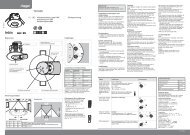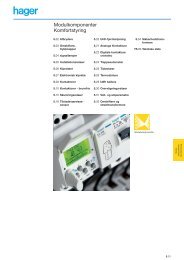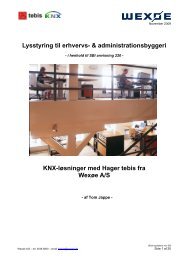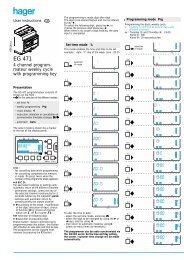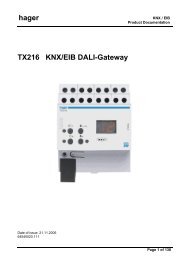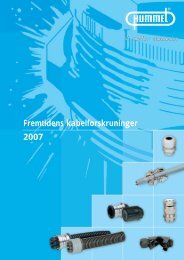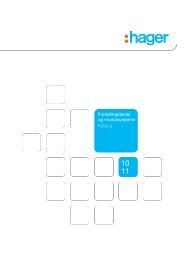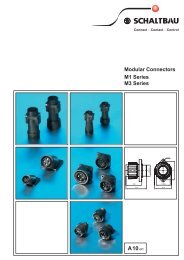SMT/THR PCB-COMPONENTS
SMT/THR PCB-COMPONENTS
SMT/THR PCB-COMPONENTS
Create successful ePaper yourself
Turn your PDF publications into a flip-book with our unique Google optimized e-Paper software.
3 THE <strong>SMT</strong> PROCESS<br />
FOR MODULES WITH <strong>THR</strong> <strong>COMPONENTS</strong><br />
3.6 Quality control<br />
Quality control concludes the <strong>SMT</strong><br />
production process. The aim of this<br />
process step is to enable swift and<br />
simple assessment, by suitable means,<br />
of the quality of the soldered joints of<br />
<strong>THR</strong> components with short or long pins.<br />
The same rules apply to quality control of<br />
the <strong>THR</strong> technology as to reflow or wavesoldered<br />
THT components.<br />
Inspection method:<br />
Quality control in parallel with the<br />
process can be realised by means of<br />
different processes. At the moment,<br />
mostly optical or X-ray inspection is<br />
used. The optical test evaluates the<br />
shape, reflection and colour of soldered<br />
joints.<br />
In the case of X-ray inspection,<br />
so-called radiographic evaluation is<br />
run by means of an automated X-ray<br />
microscope. In addition the inspection<br />
processes during the production process,<br />
an important inspection step consists<br />
of destruction tests. Carried out on<br />
samples, they serve to check measurable<br />
quantities:<br />
Cross-section of the <strong>THR</strong>-solder joint<br />
with short pin<br />
• analysis of the degree of filling by<br />
means of a cross-section through the<br />
soldered joint<br />
• mechanical inspection of the force<br />
needed to pull the pins out of the<br />
through plated holes<br />
a<br />
Standards:<br />
Various standards have come into force<br />
in the past years to enable objective<br />
quality control. Besides other acceptance<br />
test criteria for the production quality<br />
of electronic modules, the assessment<br />
criteria based on the IPC-A-610B have<br />
been acknowledged the world over.<br />
According to IPC-A-610B, the quality<br />
requirements for <strong>THR</strong> soldered joints are<br />
subdivided into three categories.<br />
Generally the requirements of category 3<br />
are decisive for high-power electronics<br />
in industrial applications. The following<br />
values have been defined for the total<br />
number of five assessment criteria:<br />
• circumferential wetting of the<br />
primary side (i.e. the component<br />
side from the component's point of<br />
view), the terminal and the sleeve<br />
must not fall below 270°<br />
• vertical solder filling must be<br />
at least 75%<br />
Optical test of soldered joints below the<br />
housing body.<br />
When done manually, a magnifying<br />
glass or a microscope is used and, in<br />
the automated process, a computercontrolled<br />
camera performs computerassisted<br />
image evaluation.<br />
75 %<br />
Dimensioning the filling height for through-hole soldered joints in accordance with IPC-A-610B<br />
16 APPLICATION INFORMATION



